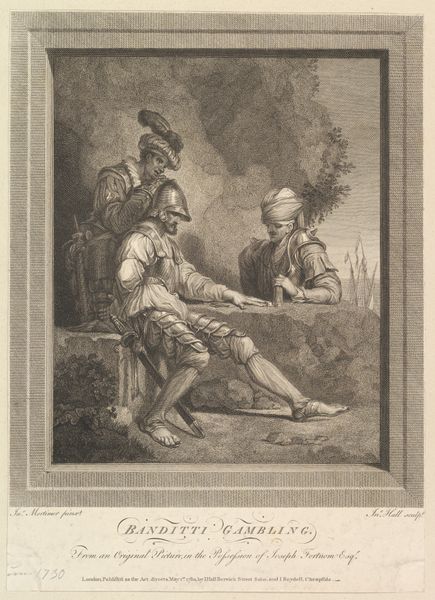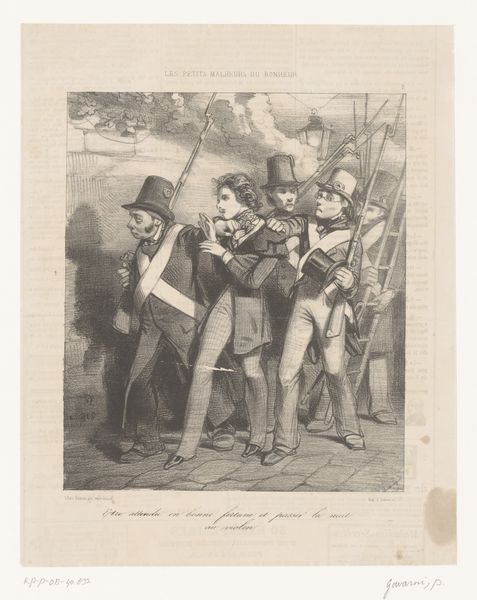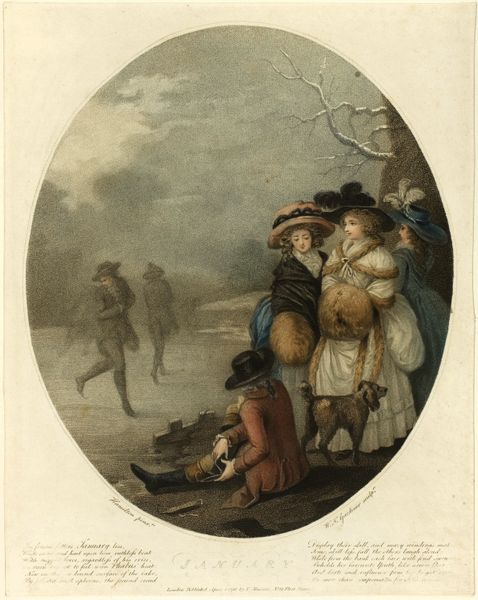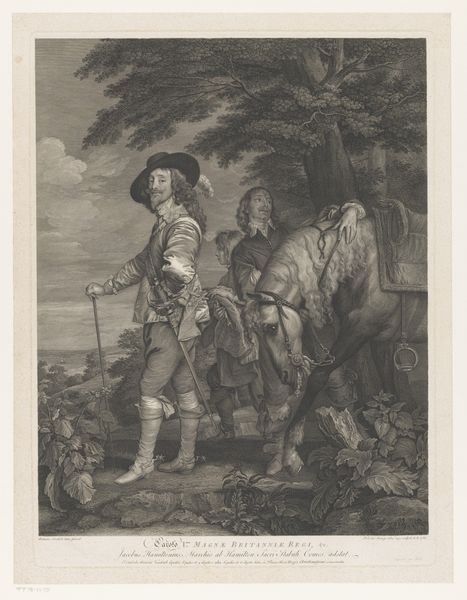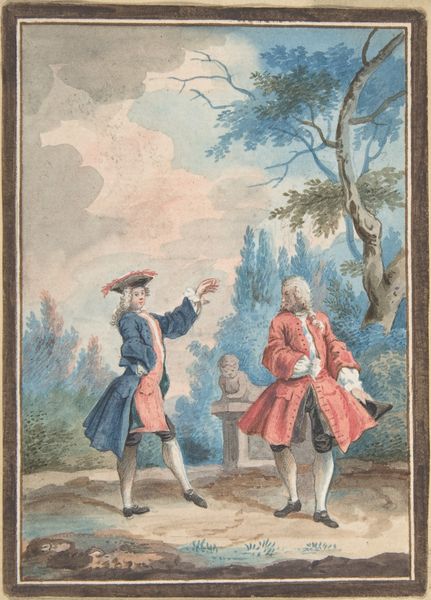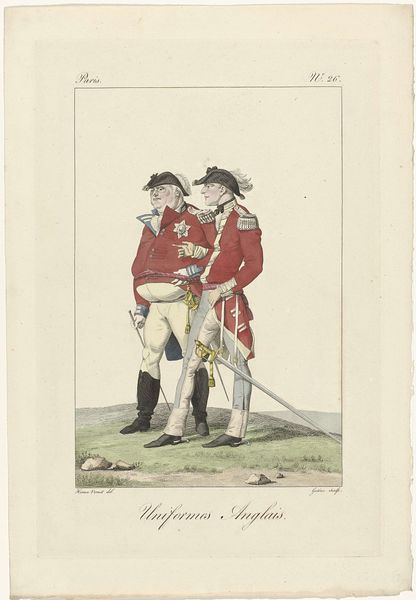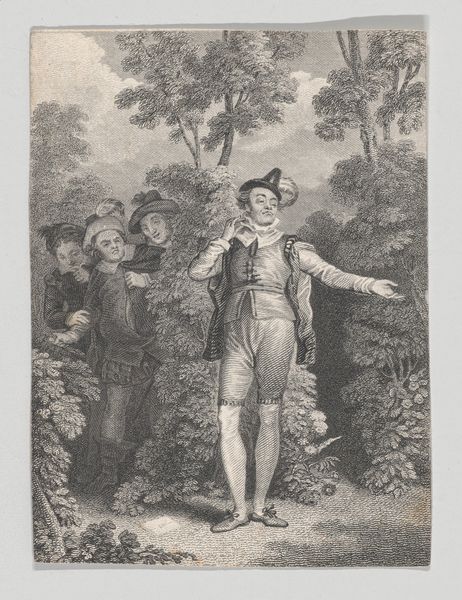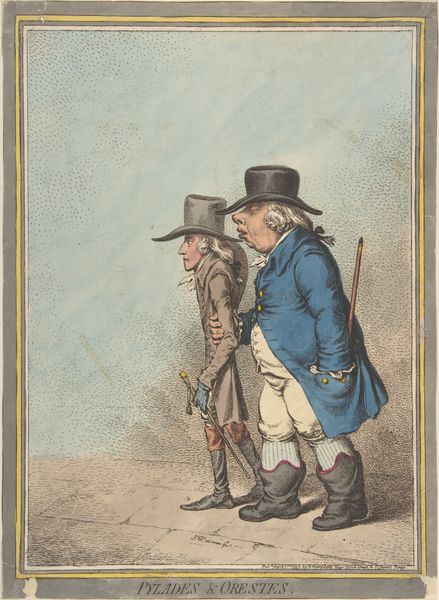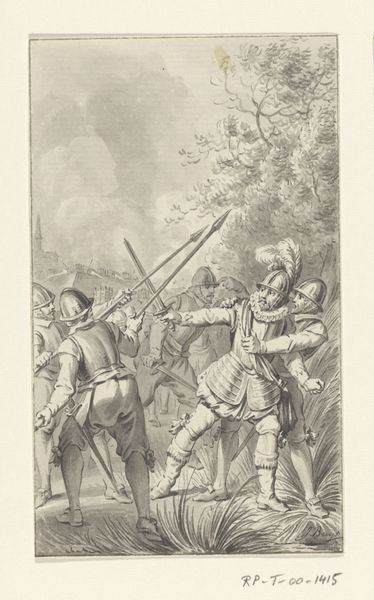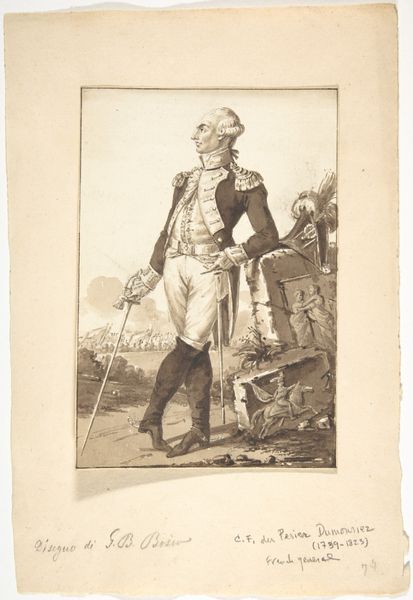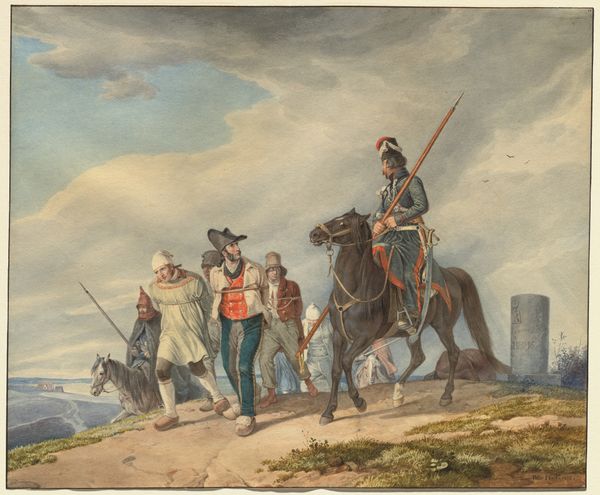
The Death of General Wolfe at Quebec (September, 1759) 1779
0:00
0:00
drawing, print, plein-air, engraving
#
drawing
#
neoclassicism
# print
#
plein-air
#
landscape
#
figuration
#
oil painting
#
history-painting
#
academic-art
#
engraving
#
watercolor
Dimensions: plate: 13 7/8 x 9 13/16 in. (35.2 x 24.9 cm) sheet: 14 5/16 x 10 1/2 in. (36.4 x 26.7 cm)
Copyright: Public Domain
Curator: Edward Penny’s rendering of “The Death of General Wolfe at Quebec”, dating to 1779 and residing here at the Met, offers a compelling tableau. What strikes you initially? Editor: Well, the pyramidal composition is quite dominant, almost like a lamentation scene you might find in Renaissance art. And yet, the color palette is rather subdued, befitting, I suppose, such a solemn occasion, but overall the picture lacks drama to me. Curator: The image pulls heavily from historical depictions of Christ’s martyrdom; Wolfe assumes a similar pose, the figures arranged as mourners in this sacred, er, *patriotic* event. It's not simply about death; it's about sacrifice for the British Empire. Note, as well, the echoes of classical drapery and figure arrangement which amplify this intended nobility and virtue of conduct in service. Editor: That outstretched arm, a gesture common in depictions of saints and martyrs, serves a propagandistic function, sanctifying Wolfe’s demise, yet it’s such an overt symbolic quotation that its original religious power becomes something performative. It’s not merely iconography at work here, but the intentional manipulation of symbols for the cultivation of political sentiment. Curator: Precisely. Every element is carefully constructed to imbue this event with a specific meaning. Consider how the sky behind General Wolfe mirrors his prone form—the light there provides a sharp contrast between him and the shadow. It is the strategic and very careful use of form and its elements in service of this particular meaning which lends it force. Editor: And what of that solitary figure waving his hat in the distance? Another symbolic layer representing, perhaps, ongoing victory even amidst this individual loss, so victory emerges out of suffering. Curator: Indeed. It visually bookends Wolfe's fate to the grand scope of imperial conquest, underscoring that death, while regrettable, contributes ultimately to British ascendency and virtue. Editor: So, ultimately, it's less a memorial than a symbol. Curator: Well put. It seems Edward Penny's strategy worked—by merging a classical and historical context with the religious, "The Death of General Wolfe at Quebec" becomes less an individual event and more about symbolic legacy and enduring nationhood. Editor: And in the end, its effect resides in understanding precisely how the historical and iconic elements work together toward that purpose.
Comments
No comments
Be the first to comment and join the conversation on the ultimate creative platform.
